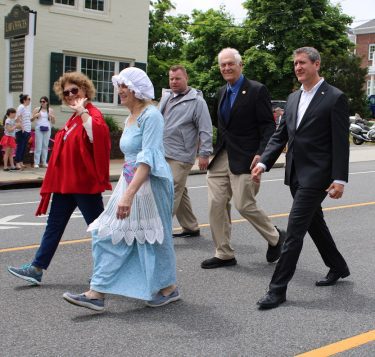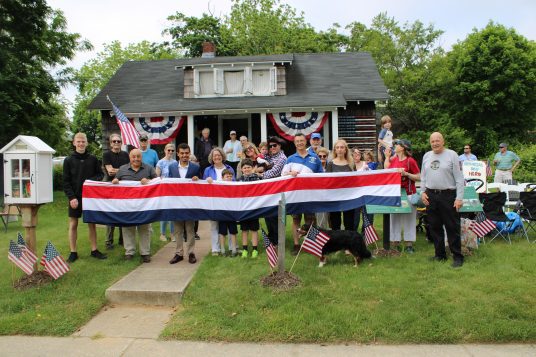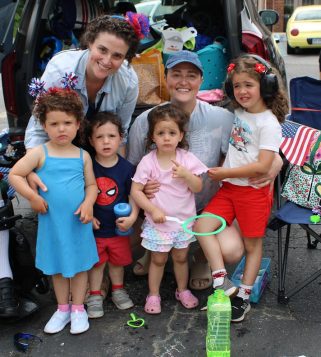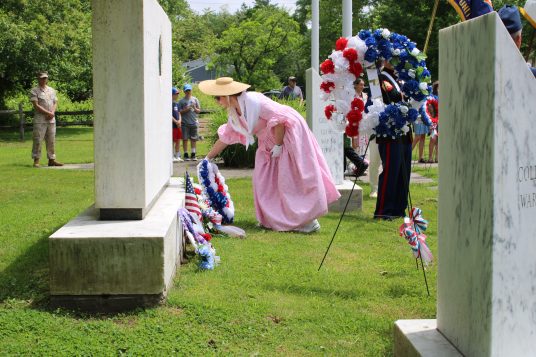By Daniel Dunaief
A year after its formation, the Center for Healthy Aging has not only brought groups of scientists and doctors across the Stony Brook University campus together, but has also funded several early-stage projects.
An initiative started by SBU President Maurie McInnis and that received financial support from the Stony Brook University Presidential Innovation and Excellence Fund, the CHA is currently jointly run by interim co-directors Dr. Suzanne Fields, Professor of Clinical Medicine and Chief of the Division of General, Geriatric and Hospital Medicine and Dr. Christine DeLorenzo, Professor of Psychiatry and Biomedical Engineering and Director of the Center for Understanding Biology using Imaging Technology.
The CHA has several themes, including helping people live longer and healthier lives. In addition, it will serve as a research center that will include basic science, translational, clinical and health services research.
McInnis spoke with Dr. Peter Igarashi, the Dean of the Renaissance School of Medicine at Stony Brook University, to create this initiative.
Dr. Igarashi wanted to make it a center where people from different departments in the university, the five Health Sciences Schools and the Program in Public Health, as well as affiliated institutions such as the Northport VA and the Long Island State Veterans Home collaborated on innovative projects related to aging.
Fields and DeLorenzo anticipate the collaborative research with bioinformatics, pharmacology and bioengineering, for example, will help clinical providers prescribe effective medications for older patients safely through special alerts/ suggestions, identify patients at risk for falling through mobility sensors, and assist clinical providers with AI diagnostic tools.
‘Shark Tank’
Last June, the CHA held a workshop in the style of the “Shark Tank” television show.
Over 100 faculty members attended that meeting from different parts of the university, where they formed groups with other attendees to pose research questions and address challenges people face as they age.
“There was so much enthusiasm there,” said DeLorenzo. “We have so much expertise on campus. We have brilliant researchers who are working on everything from age-related effects at the cellular level all the way through to lifestyle interventions for elderly folks.”
After that meeting, the CHA provided $40,000 to two projects, hoping the support could help ideas get off the ground enough that the principal investigators could then apply to larger funding agencies, such as the National Institutes of Health and the National Institute on Aging, for additional funding.
Led by Adam Singer, the chair of the Emergency Room department, one group of faculty developed ideas to help people who suffered from falls.
“When people who are elderly come into the ER and they’ve fallen, the chances” of them falling again doubles, according to the Centers for Disease Control and Prevention,” said DeLorenzo. “What I love about that pitch the table gave, which was a mixture of clinicians, biomedical engineers, a respiratory therapist, and a physical therapist is that people were coming at this question from all angles.”
The group pitched an idea to create an intervention program that helps explain how to change a person’s lifestyle to prevent another fall.
Senescent cells
Markus Riessland, an Assistant Professor in the Empire Innovation Program in the Department of Neurobiology and Behavior, led the other funded pitch.
Riessland’s project looks at a particular type of cell that can become problematic as people age.
Older cells sometimes get stuck in a senescent state, where they don’t die, but give off signals that cause an inflammatory response.
Riessland’s group “got together and asked, ‘How can we intervene to clear away these senescent cells?’” said DeLorenzo.
Young immune systems typically recognize senescent cells and remove them. As people age, the immune system has a diminished ability to detect and remove these cells, causing inflammaging, which describes a build up of inflammation during the aging process, Riessland explained in an email.
“If you remove senescent cells from an old mouse, these mice show improvements in the function of virtually all tissue” including heart, liver, lung and brain and the lifespan increases by 30 percent, Riessland added.
Researchers have hypothesized that there is also a threshold number of senescent cells a human body can tolerate. If a person exceeds that threshold, it “causes inflammaging and age-related symptoms,” he wrote.
Based on his laboratory work, Riessland found that specific neurons in the brain become senescent and that these neurons secrete proinflammatory factors.
Riessland and his colleagues aim to ameliorate this inflammation and have found a molecular regulator that could be a drug target.
Based on the work Riessland did through the CHA study, he and his colleagues are writing a grant proposal for the National Institutes of Health. In the future, he, DeLorenzo and Dr. Carine Maurer will perform a clinical trial on Long Island that will assess the feasibility to ameliorate the inflammaging process in patients with Parkinson’s disease.
Fall awards
In the fall, the center gave out six awards for $40,000 each and six for $100,000, many of which were in basic science, according to Dr. Fields.
“There was a broad array of topics, with some translational and some basic,” said Fields. “We’re following up with those people.”
Nancy Reich, a Professor of Microbiology & Immunology, received support as a part of the fall round.
The funding from CHA has “allowed us to begin to investigate the development of pancreatic cancer in the older population versus the young using a mouse cancer model,” Reich explained in an email. “Our hypothesis centers on the immune defense response.”
Search for a new director
Now that the center has made some headway and brought various teams together, the university is searching for a permanent director.
“It’s a real joy and pleasure to see this center start up,” said DeLorenzo.
DeLorenzo urges anyone interested in learning more to check the center’s web site, Center for Healthy Aging | Renaissance School of Medicine at Stony Brook University.
“We have events, and we would love for the community to go to them,” said DeLorenzo.
DeLorenzo encourages community members to reach out to Fields and her with any questions.
Riessland added that the CHA-funded projects will “have an impact on the understanding of the aging process itself.”







































































